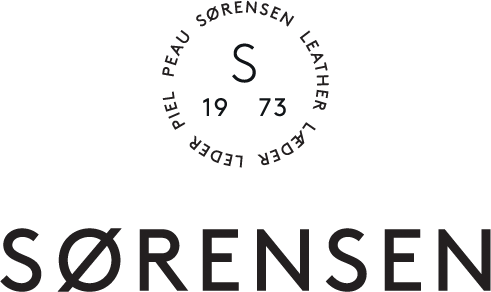CARBON FOOTPRINT of sørensen leather
Our Carbon Footprint is now documented and verified:
1 M² Sørensen leather = 8,7 kg CO2e
We are delighted by the results of our recent Life Cycle Assessment Study, which demonstrate that leather has a significantly lower carbon footprint than previously assumed, supported by concrete data and verified by third parties.
Yearly emissions have been calculated in a worst-case, natural and best-case scenario corresponding to an assumed life span of 5, 10 and 25 years.
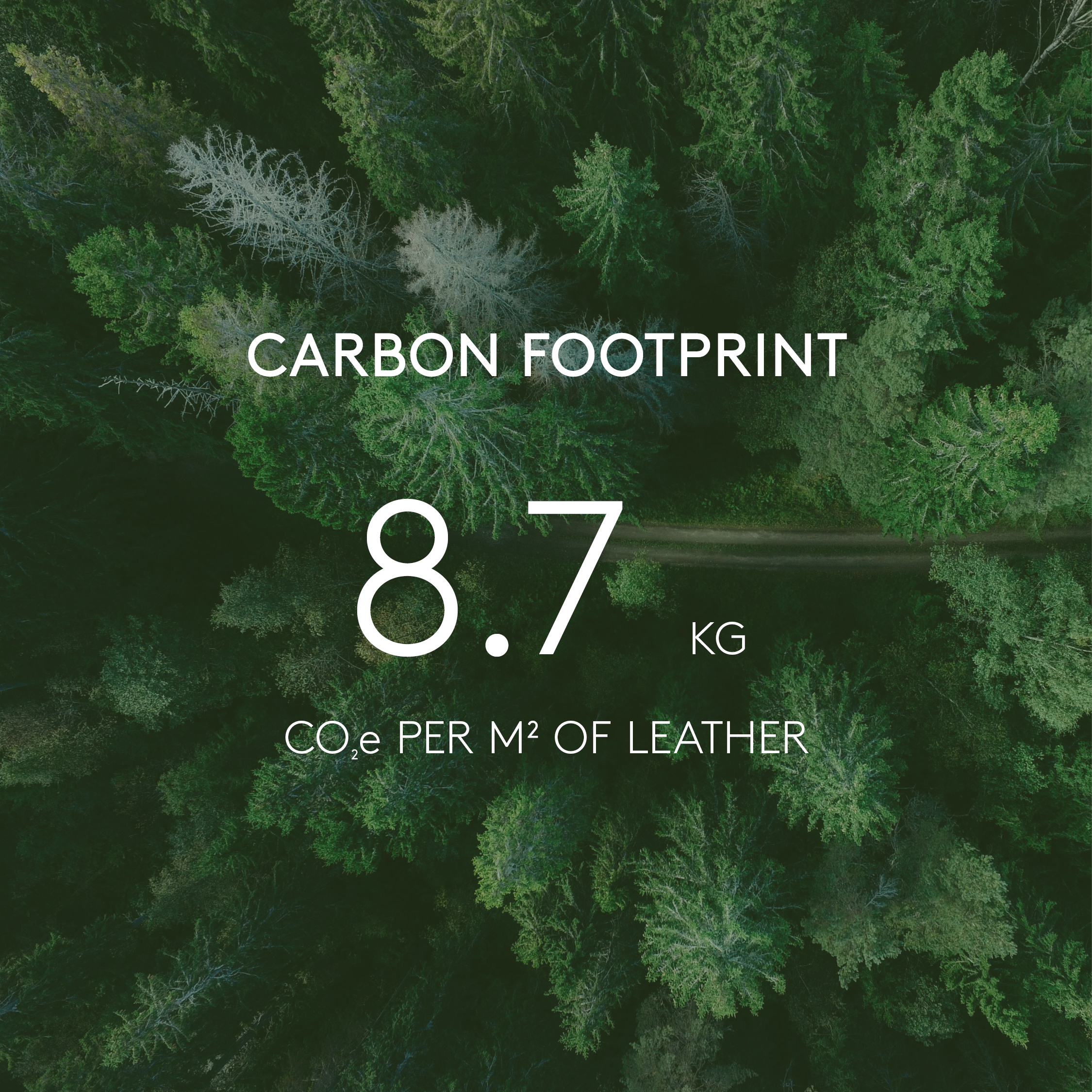
Smaller climate footprint than previously estimated
By using examples, we seek to improve comprehension of the importance of 8.7 kg CO2e, acknowledging the constraints of direct comparisons arising from differences in calculation methodologies.
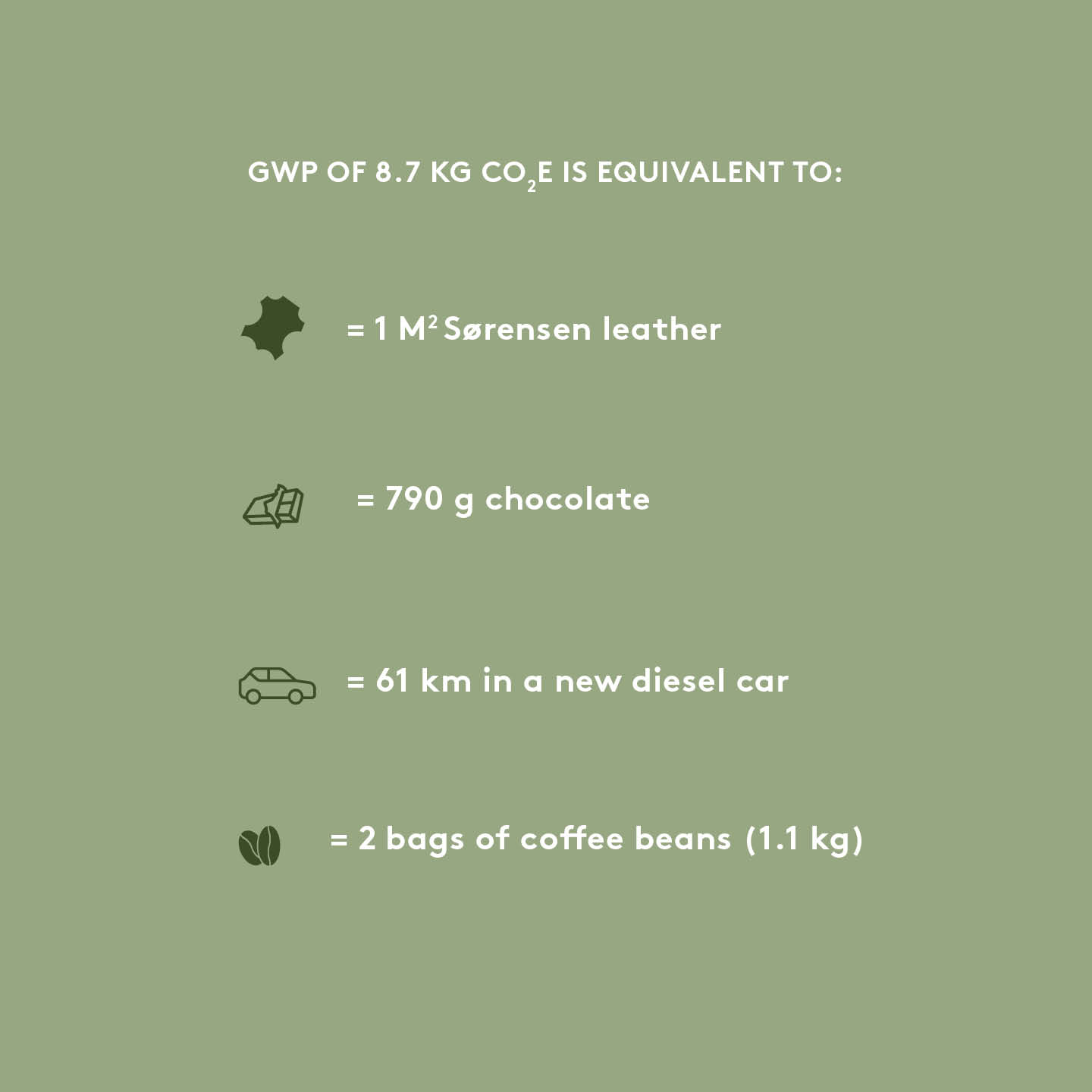
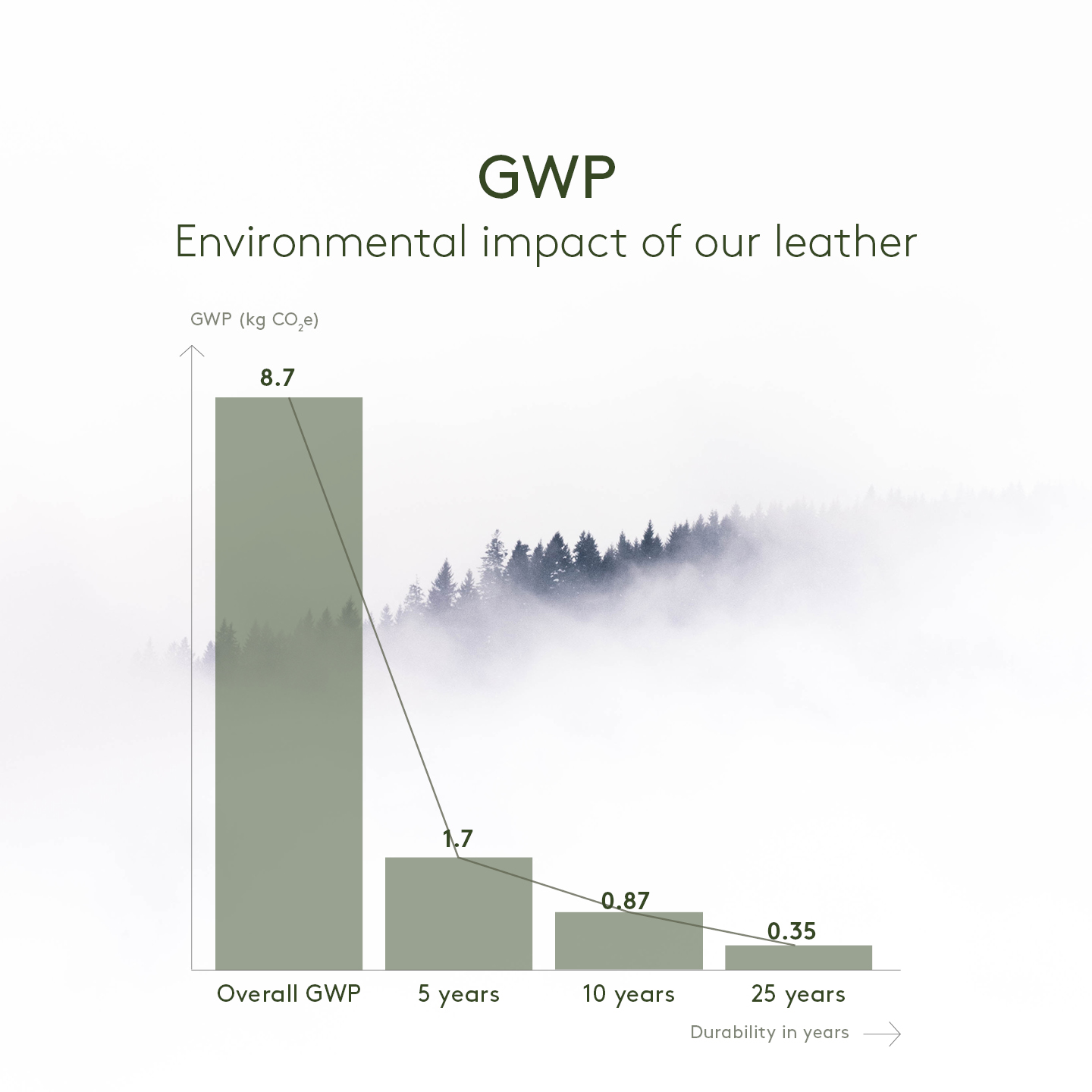
The longer the life span
– the lower carbon footprint
Significant CO2e reduction due to leather’s durability
As our calculations of GWPs show, the longer the life span of the leather, the lower the yearly emissions. The long potential life span of leather is a key factor in estimating its environmental impact.
Comparing leather to other alternative materials
This aspect becomes particulary significant when comparing leather to alternative materials such as textiles, or synthetic materials such as plastics, as these alternative materials for furniture upholstery typically have a shorter life span than leather.
Life span reduces the carbon footprint
The study includes scenarios corresponding to leather’s period of use at 5, 10, and 25 years, respectively. The study indicates that for 5 years of use, emissions are further reduced to 1.7 CO2e. After 10 years, emissions drop to 0.87 CO2e. Over a lifespan of 25 years, leather continues to minimize its environmental impact, emitting only 0.35 CO2e.
our LCA is Prepared and verifyed by a third party
The study was conducted by Energy Solutions in accordance with the international ISO standard 14067:2018 and verified by an independent third party. This ensures that our LCA has been assessed by an entity with no vested interest in the outcome.
Third-party verification lends credibility to the information by confirming that it meets established standards and criteria, enhancing the accuracy and reliability of the LCA.
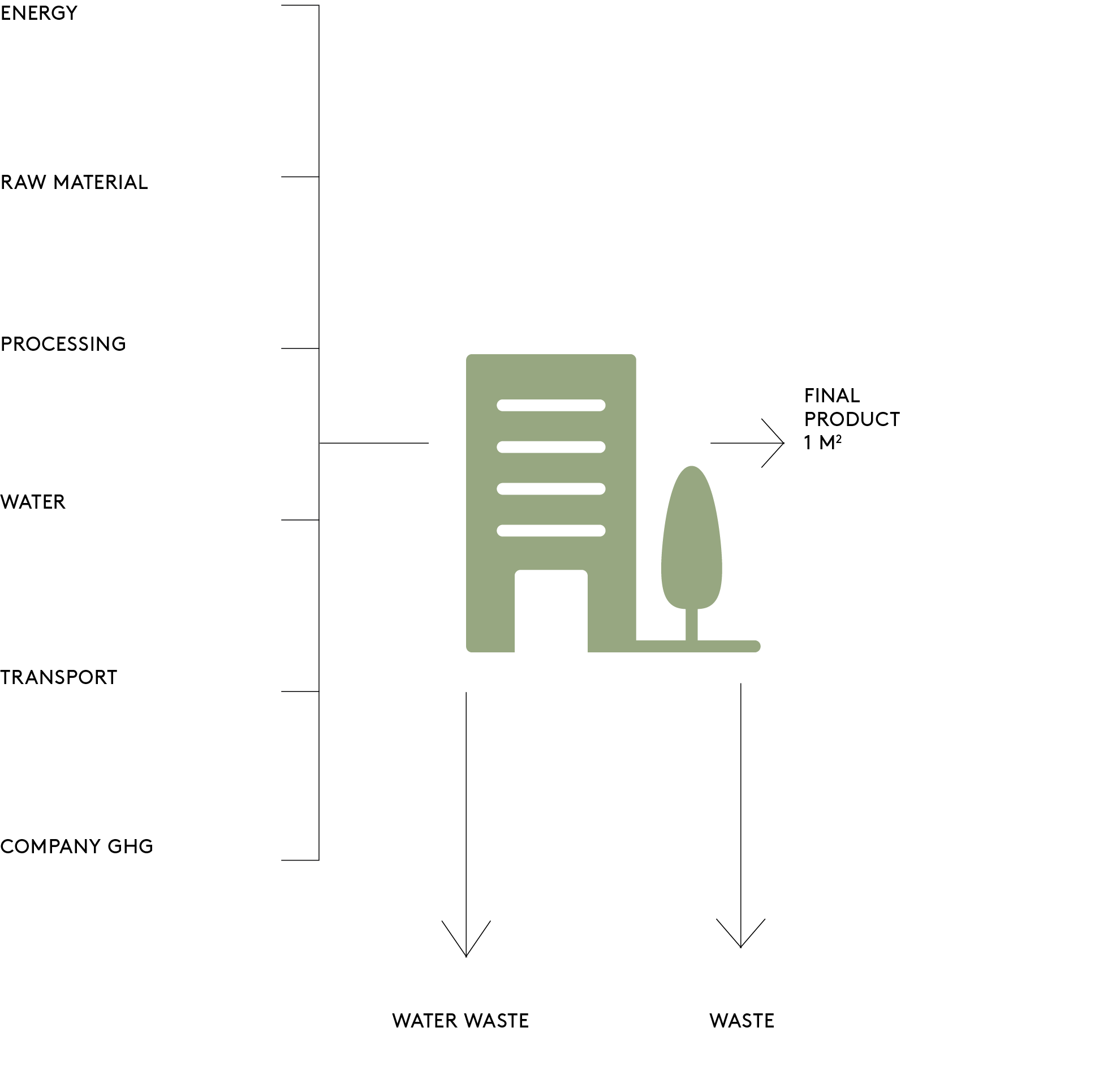
Calculations for our Life Cycle Assessment report
Method
The results in this report were calculated in line with the iso14040 and iso14044:2006 standards. Furthermore, the results are formulated in line with the technical specifications from the GHG protocol and ISO 14067:2018 to produce a full Carbon Footprint for Products (CFP) report. The GWP estimates in the study were based on an attributional approach, and were calculated according to the Intergovernmental Panel on Climate change using a 100-year time span.
The calculations show CO2e emissions from 1 M² of leather ready for dispatch in Denmark, also including calculations of the reference service life for the use stage and downstream transportation, use and shipped from Sørensen Leathers HQ in Lystrup, denmark.
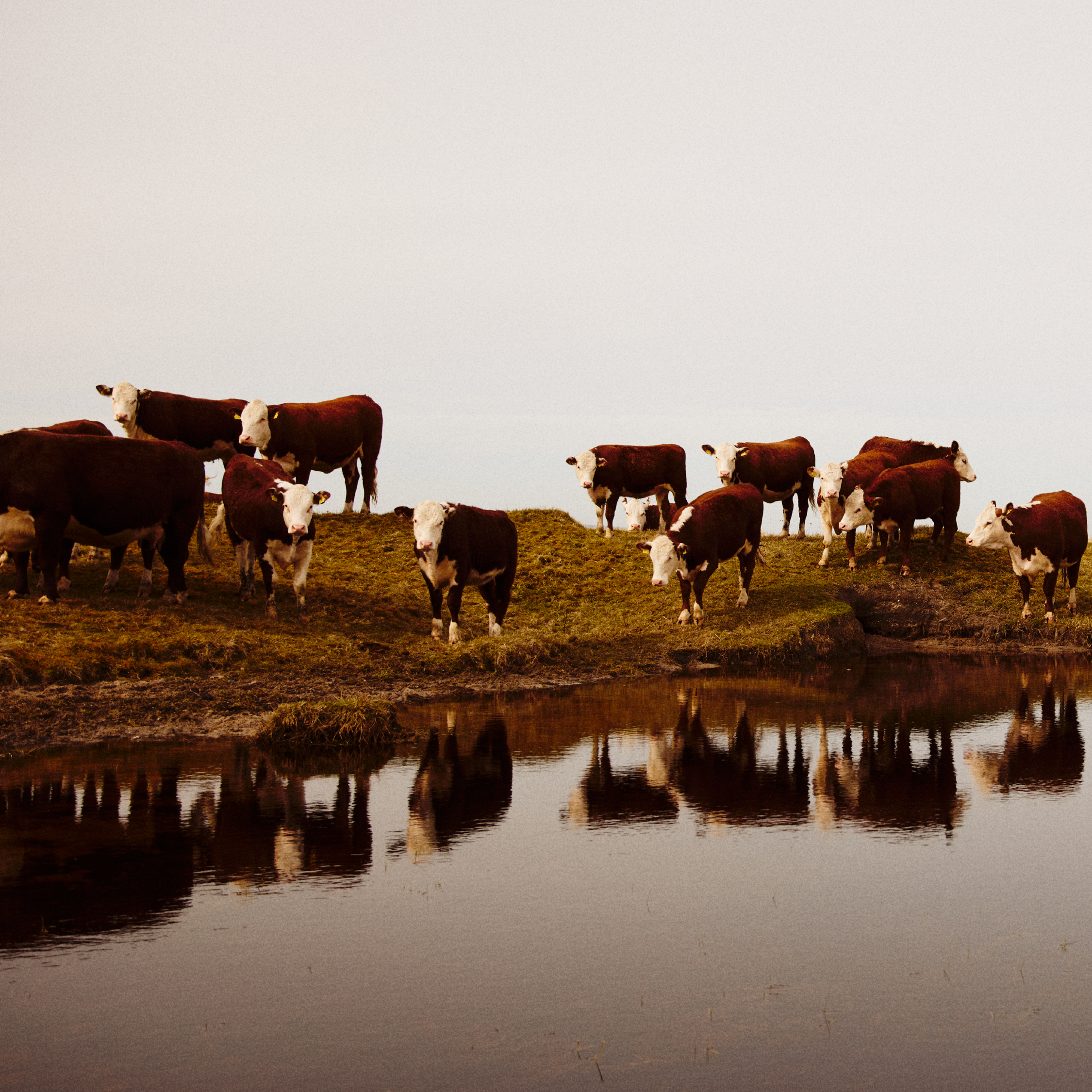

GHG inventory – Scope 1, 2 & 3
To calculate the CO2e emissions we developed a full GHG inventory for Sørensen Leather that covers scope 1 and 2, which are emissions from the HQ in Denmark, as well as scope 3, emissions stemming from the upstream value chain. The inventory thus included all purchased goods and services, capital goods such as buildings, warehouses, machinery and more.
Leather is a by-product from the meat and dairy industry, and to accurately allocate emissions from the industry to the leather, a thorough literature analysis was done. Special attention was also given to the assessment of CO2-emissions associated with the production phase, where the leather is tanned. These emissions were estimated using the most recent Product Environmental Footprint Category Rules (PEFCR) for finished leather, including footwear and other leather goods. PEFCRs are an initiative by the European Commission, and they provide rulesets on how to calculate the environmental footprint of a specific product group when conducting a LCA.
